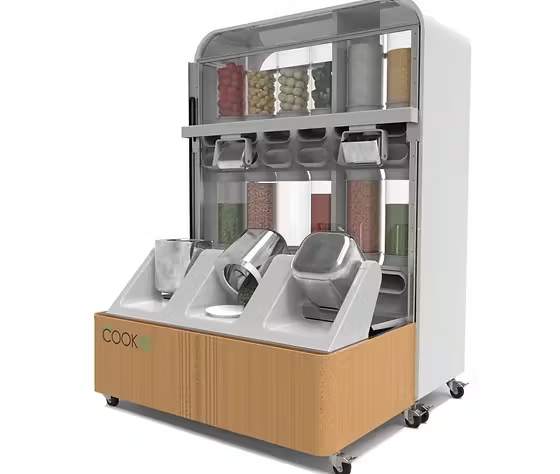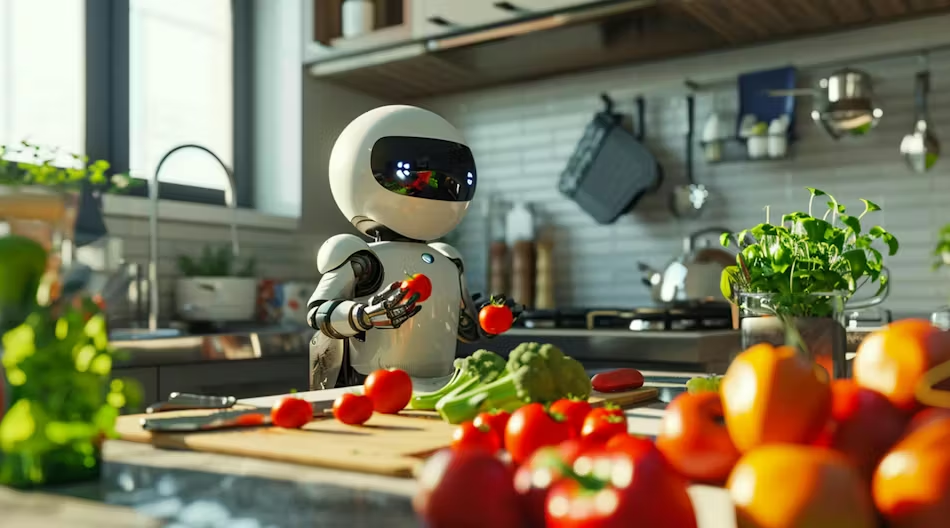Vertical farming has been around for a while, with around 200+ companies in operation producing mostly leafy greens and herbs in a controlled environment. With the rising cost of land, resources, and labor, vertical farms continue to rise in popularity due to their ability to use less water, shipping, and herbicides.
Technology Innovations
But vertical farms aren't the only modern agricultural concept. Researchers are now looking at creating vertical pollination centers for farmers. As in, farmers operating in a multilevel warehouse, boosting crop yields and reducing agriculture's harmful impacts on the environment.
Are they going to trap a bunch of bees, which are already at risk of disappearing, to do the pollinating? Yes and no.
Alexis Gajewski, senior editor at Plant Services, recently reported that MIT researchers are engineering robotic insects that can "swarm out of mechanical hives to rapidly perform precise pollination." While bee-inspired robots are nothing new, the researchers have upgraded previous prototypes to produce tiny, aerial robots that are more agile and durable than prior versions. The team claims that these redesigned robots:
Can hover for approximately 1,000 seconds, 100 times longer than previous models
Weigh less than a paperclip
Offer increased speeds over other aerial robots
Are able to carry tiny batteries or sensors
Can perform complex aerial maneuvers like double flips
Over the years, I've made a couple of friends who happen to be chefs and one of them has even opened a restaurant that's doing amazing. I'm in awe of the entrepreneurial spirit and the drive for this profession as I see and hear the struggles associated with this career: long hours and no workers.
It's no secret that the past few years have brought about a worker shortage across all types of jobs and the food industry was one of the hardest hit. A lot of loved restaurants closed down after the pandemic and the industry just hasn't been what it once was. With a culture that relies on tips to make it by, the late nights and weekends, and the constant stress—who can blame people for not wanting these jobs? And that's basically just the waiters and waitresses. Line cooks and chefs don't get tips unless a restaurant uses a pooling system where everyone gets a bit of the pot.
Well, in the trend of automating everything, a French start-up named Cook-E has developed a solution to relieve restaurateurs of the pressure of the shortage of skilled workers: a robotic kitchen. This robot chef creates fresh and healthy dishes without human assistance, swinging pots around with little space and not spilling any food.
Cook-e was created to help these restaurants avoid shutting down, relieving the burden of labor shortages. So how exactly does it cook without a staff? Surely there has to be a human component somewhere, right?
So here's how it works: Employees or guests place the order with a tablet, an input terminal or an app. Then, the robot kitchen starts the fully automatic preparation of a customized dish.
Step 1: Assemble ingredients according to the recipe. Metering containers move along a shelf with storage modules. Depending on the menu selected, rice, shredded chicken, corn, and other chopped ingredients are removed with an accuracy of 0.5 grams.
Step 2: Once all ingredients have been collected, the contents are poured into one of three rotating cooking modules that resemble a wok pan. They can rotate and tilt, mix, fry, and stir. In just 210 seconds or 3.5 minutes after ordering, the dish is ready to serve.
According to Cook-e, 250 dishes per hour are possible, including risottos, chili con carne or osso bucco.
"The automation of simple tasks and the associated lower costs allow restaurant owners to invest more in ingredients and service quality to provide a better restaurant experience with consistently high-quality dishes," stated Quentin Guilleus, co-founder Cook-e.
To allow as many restaurants as possible to benefit from automation, Cook-e has designed the robotic kitchen to be space-saving. Rental prices are high, and kitchens are correspondingly small, especially in major cities. Therefore, all components are compact, from ingredient storage modules to dosing container positioning mechanics.
Additionally, the robotic kitchen's components must meet the strict hygienic requirements of HACCP, a hygiene concept that NASA developed initially to ensure food safety for astronauts.
"The materials chosen, mainly stainless steel and PETG, are suitable for contact with food," says Guilleus.
External greases and lubricants have been eliminated, so all bearing points and surfaces are hygienic, extremely easy to clean, and quick to make ready for use again. This is important because the kitchen automatically cleans itself after every meal prepared, which involves the dosing containers and pan tilting downwards. A high-pressure water jet with cleaning agents performs the actual cleaning.
I suspect this invention will eventually make its way over to the States and while I don't believe this invention can replace higher-end restaurants, I do think it's a decent solution for fast or casual chains that are struggling with labor shortages. Time will tell.












